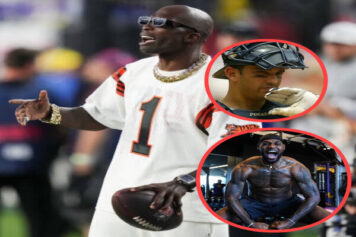“If I had one game to win…I’d take Bob Gibson.”
Bob Gibson, The Great Intimidator, passed away on Friday after a long battle with pancreatic cancer. When you google flamethrowers, it should be Bob Gibson’s name that emerges. From 1963 to 1972 Gibson averaged better than 19 wins per season. He won two Cy Young Awards, struck out more than 200 batters nine times and led the NL four times in K’s.
His tall lanky, muscular frame, menacing grill, and explosive delivery made him an obliterator of the game’s best batsman. Gibby was like a rocket ship with a slingshot on the end, commanding the plate and demanding respect for himself and his St. Louis Cardinals franchise.
https://www.instagram.com/tv/CF3nMv2j5cV/?utm_source=ig_web_copy_link
Gibson’s jersey number 45 was retired by the St. Louis Cardinals on September 1, 1975. In 1981 he was inducted into the Baseball Hall Of Fame as the best big-game pitcher the sport has ever seen. We have recently marveled at Madison Bumgarner’s postseason dominance, which included a 0.25 ERA over five World Series games in his San Francisco Giants career.
Well, Gibson was equally unstoppable in the clutch moments during hi speak in the late 60s. According to mensjournal.com, in 1964 Gibson beat the Yankees twice in the World Series, including a Game 7 performance that yielded 9 K’s. Three years later he won Games One, Four, and Seven over the “Impossible Dream” Boston Red Sox in the Fall Classic.
In addition to his unbelievable athleticism (He played a season with the Harlem Globetrotters), Gibson was known for pitching inside to batters, headhunting even. It was another era and competition was executed more personally and aggressively back then.The baseball principles of protecting your territory
Houston Astros manager Dusty Baker received the following advice from Hank Aaron about facing Gibson back when Dusty was an MLB player.
“‘Don’t dig in against Bob Gibson, he’ll knock you down. Don’t stare at him. He doesn’t like it. If you happen to hit a home run, don’t run too slow, don’t run too fast. If you happen to want to celebrate, get in the tunnel first. And if he hits you, don’t charge the mound, because he’s a Gold Glove boxer.’ I’m like, ‘Damn, what about my 17-game hitting streak?’ That was the night it ended.”
Legendary Stolen Base King Lou Brock Sparked St. Louis Cardinals Offense, Gibson Led The Defense
Along with starter Bob Gibson and center fielder Curt Flood, Lou Brock was an African-America anchor for St. Louis and his base-stealing prowess formed the foundation of a Cardinals team that rode speed, defense, and Bob Gibson’s golden right arm to three NL pennants and World Series titles in 1964 and ’67.

With the exception of Rickey Henderson, who took Brock’s blueprint and supersized it, Lou Brock is the greatest bag swiper in MLB history. The speedster was also 81-years-old when he passed on September 6th, 2020, three years after being diagnosed with cancer.
“Lou Brock was one of the most revered members of the St. Louis Cardinals organization and one of the very best to ever wear the Birds on the Bat,” Cardinals chairman Bill DeWitt Jr. said in a release.
“He will be deeply missed and forever remembered.”
The man later nicknamed the Running Redbird and the Base Burglar arrived in St. Louis in June 1964, in one of the most lopsided trades in MLB history. Brock was in his bag when on the bases. He stole a whopping 938 bases in his career, including 118 in 1974 — both of those were big league records until they were broken by Rickey. Brock was a lethal weapon. A lifetime .293 hitter, who led the league in steals eight times, scored 100 or more runs seven times and is a member of the vaunted 3,000 hits club (3,023).
Like his teammate and friend Gibson, Brock elevated his skills in the postseason, batting .391 with four homers, 16 RBIs and 14 steals in 21 World Series games.
In his 1976 memoir “Lou Brock: Stealing is My Game,” he explained his success. Take a “modest lead” and “stand perfectly still.” The pitcher was obligated to move, if only “to deliver the pitch.”
These two icons are historic figures in baseball history and also sadly represent two elements of the game that have been minimized over the years and are almost nonexistent in today’s baseball; The Black starting pitcher and the stolen base.
Maury Wills, Lou Brock, Rickey Henderson, and Vince Coleman are the only MLB players to steal 100 bases since Jackie Robinson broke the color barrier in 1947.
David Price is the last Black pitcher to win an American League Cy Young Award in 2012. CC Sabathia won it in 2007. The last NL Cy Young Award winner was “Dr. K” Dwight Gooden in 1985.
Before Doc, two other Black Aces won Cy Young’, Gibson in 1970 and Black Canadian Fergie Jenkins in 1971.
https://twitter.com/fergieajenkins/status/1312232064935227392
With the advent of metrics and statistical data increasingly used to project a player’s value at the MLB level and skill sets such as stolen bases being devalued, which lowers the excitement and all-around skill value of the game, fewer elite Black athletes have been pursuing careers in baseball. The ones that have, are usually switched from the infield and pitching positions to the outfield now.
We are seeing less and less Bob Gibson’s. And Lou Brock’s style of play has been almost totally eliminated. .300 hitters who can steal 50-100 bases have been replaced by .225 hitters who can pop 30 homers. The Black Ace is also in a bad place. Marcus Stroman is the only Black starting pitcher under 30 whose name is even somewhat recognizable to MLB fans.
These men are golden. We have lost two national treasures and shining examples of the remarkable contributions that African-Americans and their style of play bring to the sport of baseball. Let’s hope we haven’t seen the last of their kind.



